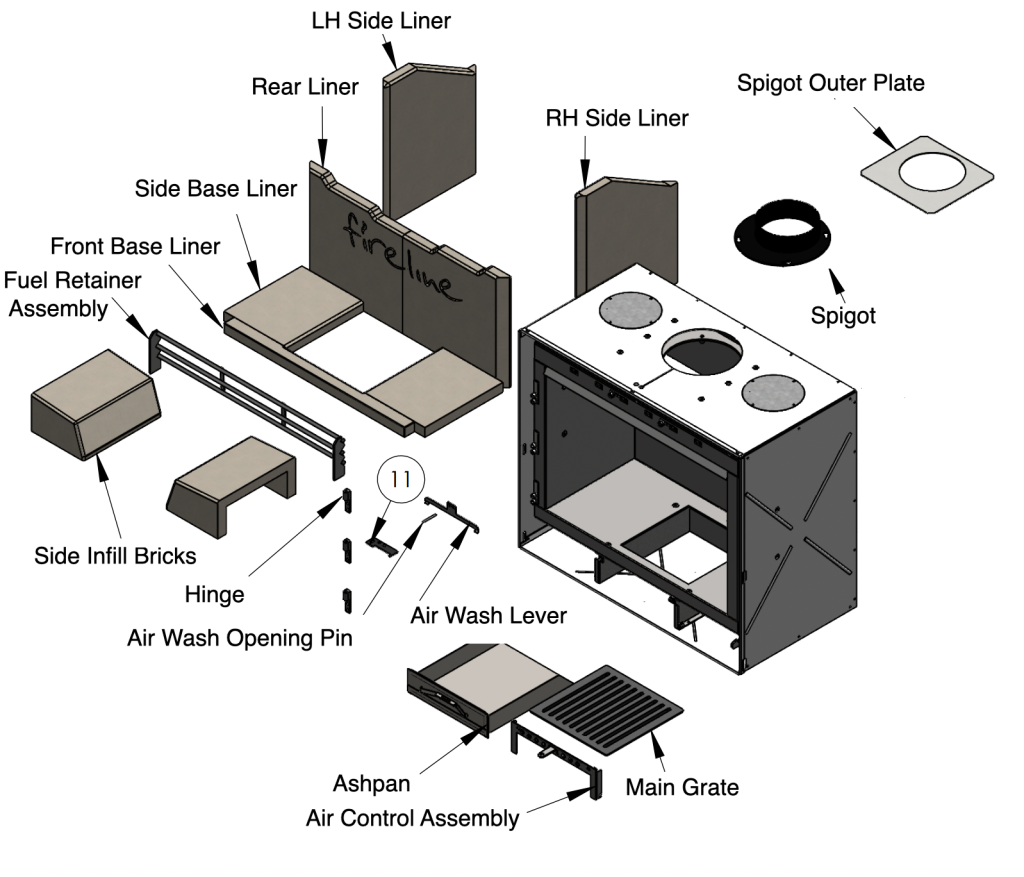A wood-burning stove elements plan acts as a comprehensive information to the internal workings of the traditional heating devices, supplying a detail by detail breakdown of each component. At the key of the diagram is the firebox, the key step where records are burned to create heat. The fireback, often made of refractory substance, absorbs and reflects heat into the room. It’s a critical portion that ensures efficient combustion and blows glorious warmth.
A vital part presented in the wood-burning stove areas plan could be the baffle. Positioned above the fireplace, the baffle functions to redirect smoke and gases, marketing an even more total burn and increasing power efficiency. Additionally, it can help to stop temperature reduction up the chimney. Beneath the firebox, the ash pot gathers ashes created throughout combustion, giving a simple suggests for elimination and disposal.
Knowledge the circulation character is needed for maximizing the performance of a wood-burning stove. The air absorption control, often shown in the plan, enables customers to regulate the quantity of air entering the combustion chamber. Appropriate circulation management is a must for maintaining an successful burn and controlling the stove’s temperature. Moreover, some wood-burning stoves have a damper, which more fine-tunes the control of airflow.
The plan usually contains the flue collar or stovepipe relationship, where in actuality the oven is attached to the chimney. This part ensures the secure expulsion of combustion byproducts, such as for instance smoking and gases, from the oven to the outside. The damper, positioned within the stovepipe, could be adjusted to regulate the draft and improve combustion.
The door and home gasket are essential components outlined in the wood-burning range parts diagram. The door gives usage of the firebox, facilitating launching and washing, whilst the gasket guarantees an airtight close when the entranceway is closed. Sustaining a proper seal is essential for handling combustion and steering clear of the avoid of smoke and gases in to the residing space.
Many contemporary wood-burning ovens function another combustion system, and this really is usually highlighted in the elements diagram. The extra air consumption introduces oxygen over the fire, igniting gases made throughout the original combustion. This chimney and air duct cleaning combustion enhances efficiency and decreases emissions, adding to a solution burn.

Lastly, the wood-burning stove components plan may include numerous ornamental aspects or functional features. This might range between ornamental designs on the stove’s outdoor to grips, legs, and other visual or ergonomic details. Understanding the entire construction of components not only supports the preservation and function of the wood-burning range but in addition deepens the understanding for the engineering involved in these time-honored heat appliances.
